-
Climate change rapidly warming world’s lakes, threatening freshwater supplies
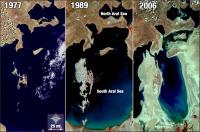
Climate change is rapidly warming lakes around the world, threatening freshwater supplies and ecosystems, according to a study spanning six continents. The study is the largest of its kind and the first to use a combination of satellite temperature data and long-term ground measurements. A total of 235 lakes, representing more than half of the world’s freshwater supply, were monitored for at least twenty-five years. The study found that lakes are warming an average of 0.61 degrees Fahrenheit (0.34 degrees Celsius) each decade. This is greater than the warming rate of either the ocean or the atmosphere, and it can have profound effects, the scientists say.
-
-
Autumn 2015 was record warm for the contiguous U.S.

The National Oceanic and Atmospheric Administration (NOAA) ha release a report which shows that the autumn of 2015 was the warmest autumn in the last 121 years — since measurements began in 1895. The September-November contiguous U.S. average temperature was 56.8°F, 3.3°F above the twentieth century average, surpassing the previous record of 56.6°F set in 1963. Record and near-record warmth spanned much of the nation. The November contiguous U.S. temperature was 44.7°F, 3.0°F above the twentieth century average and the thirteenth warmest in the 121-year period of record.
-
-
The third intifada; new, smaller Schengen; EU border patrol
Mahmud Abbas, the president of the Palestinian Authority, has been warned by the military wing of the PLO that unless he can persuade the UN Security Council to vote for a resolution calling for the creation of an independent Palestinian state, a new intifada will be launched to convince Israel that a continued occupation of Palestinian lands will be costly; European officials are planning to abandon the 30-year old Schengen Agreement and replace it with a much smaller, Western Europe-only free-travel zone; facing rising seas, residents of the Pacific island of Tuvalu are looking for a new home.
-
-
“Unprecedented” storms, floods in north-west England are more common than we think
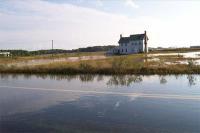
The recent “unprecedented” flooding in north-west England might be more common than currently believed, a group of scientists has warned. A team of experts has drawn on historic records to build a clearer picture of the flooding. They conclude that twenty-first-century flood events such as Storm Desmond are not exceptional or unprecedented in terms of their frequency or magnitude, and that flood frequency and flood risk forecasts would be improved by including data from flood deposits dating back hundreds of years.
-
-
DHS S&T calls on non-traditional performers to offer solutions to tough threats

DHS Science and Technology Directorate (S&T) last week announced its first Innovation Other Transaction Solicitation (OTS) aimed at non-traditional performers such as technology start-ups to offer solutions to some of the toughest threats facing DHS and the homeland security mission. Awarded through Other Transaction Solicitation HSHQDC-16-R-B0005, the first call for proposals is looking for solutions to improve situational awareness and security measures for protecting Internet of Things (IoT) domains.
-
-
Nature influences water in the Colorado River basin more than humans do
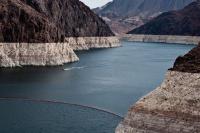
Researchers have found that the water supply of the Colorado River basin, one of the most important sources for water in the southwestern United States, is influenced more by wet-dry periods than by human use, which has been fairly stable during the past few decades. The team found that water storage decreased by 50 to 100 cubic kilometers (enough water to fill Lake Mead as much as three times) during droughts that occur about every decade. The big difference between recent and previous droughts is that there have been few wet years since 2000 to replenish the water. In contrast, multiple wet years followed drought years in the 1980s and 1990s.
-
-
U.K. university suspends Islamic society over hosting hate speakers

Queen Mary University of London has suspended the Islamic society at the university after the students’ union has launched an investigation into possible violations of protocols and procedures by the society. the society has been accused in the past of hosting events in which radical Islamist speakers, including speakers associated with Islamist fundamentalist groups. The U.K. government said that at least seventy events featuring hate speakers were held on U.K. campuses last year.
-
-
Matching bullets to wounds using organ-specific protein signatures found on projectiles
Forensic medicine has long employed molecular biology to link, for instance, tiny amounts of organic material to a suspect. Yet, such methods are less useful when it comes to finding out which shot or stab wound was the cause of death. They enable a weapon to be linked to the victim, but not the projectile to the wound. Researchers have developed a method which enables them more accurately to reconstruct crimes involving sharp blades or firearms.
-
-
Detecting, identifying explosives with single test
A new test for detecting multiple explosives simultaneously has been developed. The proof-of-concept sensor is designed quickly to identify and quantify five commonly used explosives in solution to help track toxic contamination in waste water and improve the safety of public spaces.
-
-
Fibers from natural fats make bulletproof vests stronger and greener
Bulletproof vests and other super-strong materials could soon become even tougher and more environmentally friendly at the same time with the help of extra firm, or “al dente,” fibers. These materials, which are powerful enough to stop speeding bullets, can also be used for many other tasks that require strength.
-
-
Climate outlook may be worse than feared
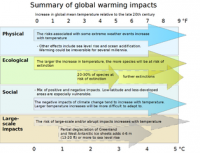
The impact of climate change may be worse than previously thought, a new study suggests. The research first created a simple algorithm to determine the key factors shaping climate change and then estimated their likely impact on the world’s land and ocean temperatures. The method is more direct and straightforward than that used by the IPCC, which uses sophisticated, but more opaque, computer models.
-
-
Climate change impacts may appear in some areas sooner than expected

Some impacts of global climate change will appear much sooner than others — with only moderate increases in global temperature. While rising sea levels may one day threaten the commuter tunnels and subway lines of New York City, it will have effects much sooner in other parts of the world – for example, the Marshall Islands and Bangladesh. In countries exposed to the destructive effects of climate change sooner rather than later, there will be little incentives to do something about climate change because the damage has already been done. Thus, once significant portions of the Marshall Islands or Bangladesh are destroyed by rising seas, the rate of damage will reach “saturation” — an inflection point beyond which further temperature increases have little additional effect. Once the Marshall Islands are large sections of Bangladesh are uninhabitable, there is not more damage that can be done there, and the governments of these countries will not have an incentive to participate in global climate efforts because they will not have anything more to lose.
-
-
Global freshwater loss due to dams, irrigation much larger than previously thought
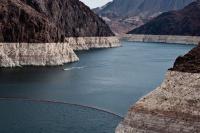
Dams and irrigation, by increasing evapotranspiration, raise the global human consumption of freshwater to a much higher level than previously thought. This effect increases the loss of freshwater to the atmosphere and thereby reduces the water available for humans, societies and ecosystems on land.
-
-
Unmanned Maritime Systems 2015 conference: “Reliability, Economy, Endurance”
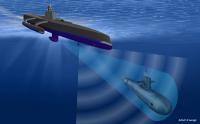
The theme of the Unmanned Maritime Systems 2015 conference, being held 7-9 December 2015 in Arlington, Virginia, is “Reliability, Economy, Endurance: Requirements for Next-Generation Unmanned Surface and Undersea Systems.” The organizers note that there is a growing demand for Unmanned Maritime Systems (UMS) as today’s geopolitical environment poses a number of unique security challenges in the maritime domain. Advances in power, robotics, computing, sensors, and navigation technologies drive a growing DoD demand for unmanned systems that can provide increased autonomy, persistent resilience, and functionality with decreased risk and expense, showing their value across multiple applications, including otherwise dull, dirty, or dangerous missions.
-
-
A woman’s involvement makes San Bernardino shooting rare among mass shootings
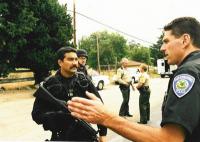
The shooting in San Bernardino, California marked the 355th mass shooting in the United States in fewer than as many days in 2015. As details emerge regarding the events, it is clear that these types of crimes are morphing and not abating. “Shootings involving mission-oriented females may be a new threshold which should be concerning to all of us, and the incident in San Bernardino might just be a hybrid, and a harbinger, of shootings to come,” says an expert.
-
More headlines
The long view
New Technology is Keeping the Skies Safe
DHS S&T Baggage, Cargo, and People Screening (BCP) Program develops state-of-the-art screening solutions to help secure airspace, communities, and borders
Factories First: Winning the Drone War Before It Starts
Wars are won by factories before they are won on the battlefield,Martin C. Feldmann writes, noting that the United States lacks the manufacturing depth for the coming drone age. Rectifying this situation “will take far more than procurement tweaks,” Feldmann writes. “It demands a national-level, wartime-scale industrial mobilization.”
How Artificial General Intelligence Could Affect the Rise and Fall of Nations
Visions for potential AGI futures: A new report from RAND aims to stimulate thinking among policymakers about possible impacts of the development of artificial general intelligence (AGI) on geopolitics and the world order.
Smaller Nuclear Reactors Spark Renewed Interest in a Once-Shunned Energy Source
In the past two years, half the states have taken action to promote nuclear power, from creating nuclear task forces to integrating nuclear into long-term energy plans.
Keeping the Lights on with Nuclear Waste: Radiochemistry Transforms Nuclear Waste into Strategic Materials
How UNLV radiochemistry is pioneering the future of energy in the Southwest by salvaging strategic materials from nuclear dumps –and making it safe.
Model Predicts Long-Term Effects of Nuclear Waste on Underground Disposal Systems
The simulations matched results from an underground lab experiment in Switzerland, suggesting modeling could be used to validate the safety of nuclear disposal sites.
